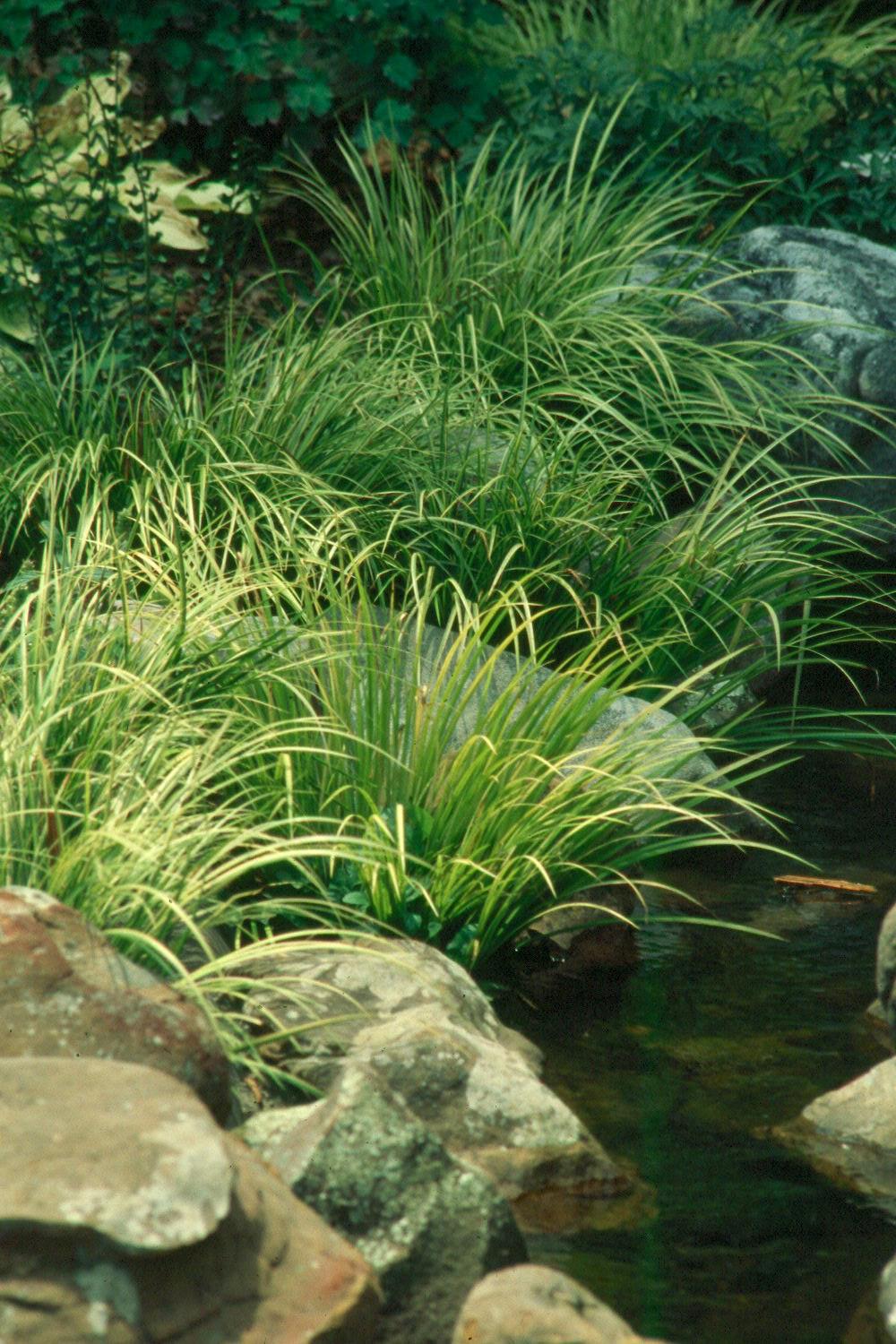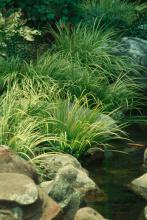Information Possibly Outdated
The information presented on this page was originally released on August 4, 2005. It may not be outdated, but please search our site for more current information. If you plan to quote or reference this information in a publication, please check with the Extension specialist or author before proceeding.
Discover Ogon shining among sweet flag grasses
By Norman Winter
MSU Horticulturist
Central Mississippi Research & Extension Center
Ogon, the leading variety of Japanese sweet flag, is just beginning to attain all the wonderful landscape possibilities that it is capable of achieving. This year has given me a new appreciation for this member of the lily family.
Dwarf sweet flag, mostly called Japanese sweet flag, is known botanically as Acorus gramineus. Although still fairly new in our local markets, this grass is drawing increased attention.
Proven Winners, which brought us plants like Supertunias, Super Bells and Superbenas, has done a lot to stir the pot on the sweet flag grasses in their Fall Magic promotion. They brought us Ogon (or Golden Japanese Sweet Flag) and another called White Japanese sweet flag, known botanically as Acorus gramineus variegatus.
The Acorus calamus may be the best-known of the sweet flag sedges with its larger leaves that give off an aromatic scent. The foliage and rhizomes are used today to make the Oil of Calamus.
The Acorus gramineus group is not nearly as aromatic, but they do give us some great new choices in addition to liriopes. Ogon is my favorite because of its golden color combined with green variegation.
The dwarf sweet flags work well tucked among rocks in creek beds, whether dry or flowing with water. Plant them near water gardens or ponds. They are choice plants for pocket planting in mixed containers of flowers and greenery. The golden variegated leaves literally shine, drawing your eye to gaze in its direction. Try combining with bamboo, umbrella plants and Louisiana iris.
The Japanese sweet flag spreads from the tips of rhizomes similar to the way an iris spreads. This gives you the option of using it as a ground cover. It does best if it gets a little filtered shade during the heat of the day.
Plant yours so that the rhizome is showing slightly above the soil line, then water thoroughly. Since it likes moist soil, be sure to apply a good layer of mulch and water during droughty periods.
The soil should be fertile, organically rich or loamy, and retain moisture well. Tight clay soils will not make you or the sweet flag very contented.
While ugly liriope leaves need cutting back virtually every year, these sweet sedges have a tendency to keep the leaves attractive for more than a year. From time to time, you will want to trim leaves that have lost their effectiveness. Do so in late winter before new growth resumes.
Feed with a slow-released fertilizer like a 12-6-6 at a rate of 2 pounds per 100 square feet of bed space in late winter or early spring.
Lastly, don't forget about the super dwarf golden selection called Minimus aureus. This one only gets about 3 inches tall and then curves slightly toward the ground giving a gold carpet look.
You may still find the Japanese sweet flags at garden centers, and they can be planted now with good success. If they are out, they probably will have them again in the fall. I hope you will give some a try.








